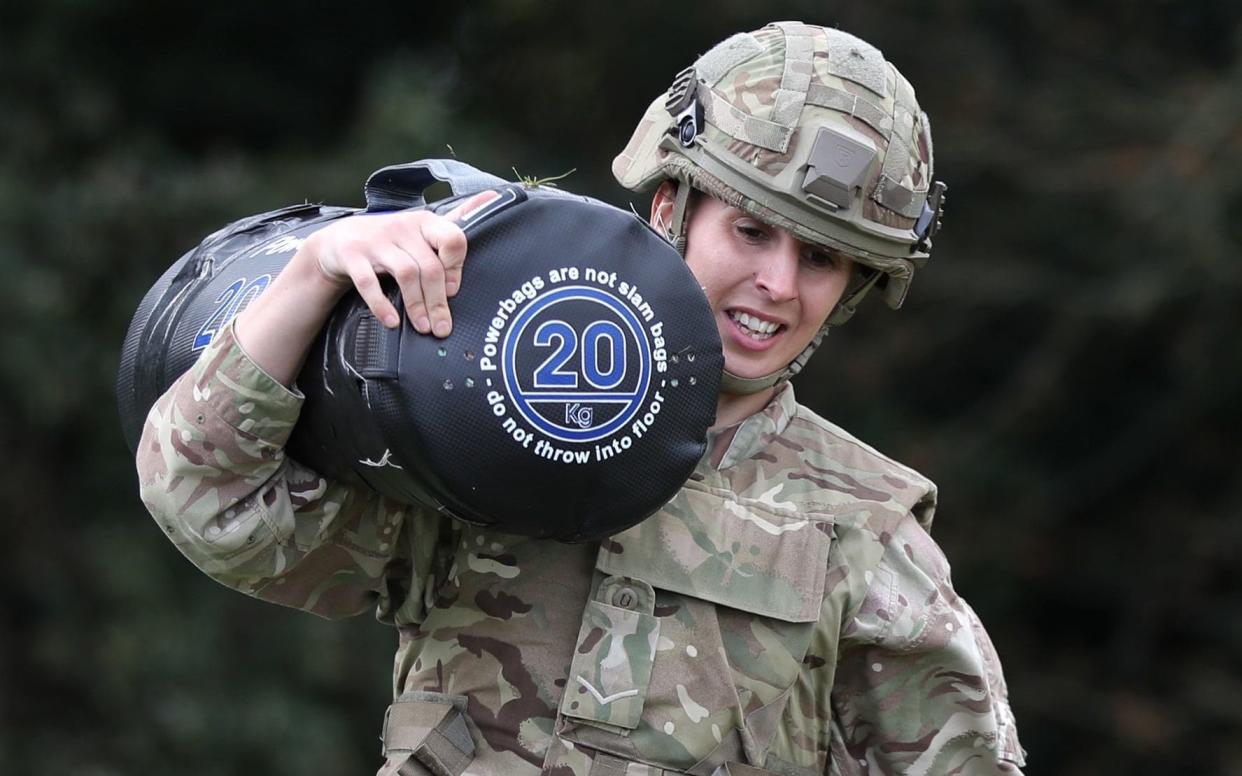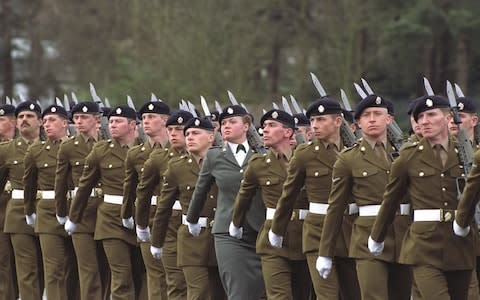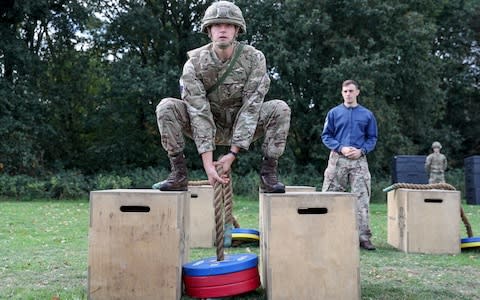Press-ups and sit-ups dropped from new gender neutral Army training

For centuries, young soldiers have been “thrashed” in a hell for leather fitness test to prove they were at the peak of physical strength and battle ready. But in a new scientific overhaul of basic training, the British Army revealed yesterday that combat training will become “gender and age neutral” - because the enemy does not care what sex or how old a soldier is.
For the last three years, the military has worked with scientists from the University of Chichester to produce new “representative military tasks” that will replace a regime that has been used for the last 20 years.
While previous tests have varied time limits or requirements depending on age and gender, all of the new tests to be rolled out next year will have a set standard, regardless of how old or the sex of the soldier.
Introducing the new Physical Employment Standards, Field Army Sergeant Major Gavin Paton said: “I don't care if you are a man or a woman, I don't care what you do, and the enemy doesn't either.”

In a move designed to recreate the challenges of the modern day battlefield, soldiers in the infantry and armoured units will be required to complete six specially designed physical tests.
Instead of the old focus on aerobic fitness, with gruelling press-ups and sit-ups, the new tests demand a greater mix of stamina, muscular endurance and strength.
Sgt Maj Paton added: “I've got plenty of combat experience, but I've never done a sit-up on the battlefield.”
Helping create the new system, the university’s Human Physiology Team spent months analysing the different challenges created in modern soldiering combat situations. They also took account of changes in scientific knowledge about the human body.
These challenges were adapted to actual physical tasks and then submitted to military judgement panels to be refined.

“We are moving with society,” she said, adding that the new tests need to “fit with the modern approach,” to sports science. In the modern Army, female soldiers are increasingly engaging with the enemy in combat situations.
The old tests comprised of two annual requirements. Firstly, a soldier would have to do as many sit-ups and press-ups as possible in two minutes. Then, they would have to run a mile and a half as fast as they could. The second test was an 8-mile march carrying 25kgs in under two hours.

Sgt Maj Paton said that while the old tests were not bad, modern combat has changed in recent decades and the exams need to reflect that shift.
“Combat is gritty, hard and tough and we must prepare our people for it,” he said. “The new test is not harder, just different. It will stretch people. It’s demanding, but certainly achievable.”
The new test starts with a 4km march in full kit, followed by a shorter run and crawl, to simulate fighting through an enemy position. Soldiers then have to drag and lift heavy weights as if casualties have been taken in an attack and need to be moved quickly. Finally, troops have to repeatedly lift and carry weights as if they were building a defensive position. The test takes about three hours to complete.

Soldiers are expected to be exhausted at the end of the session. This cumulative fatigue element is designed to be more representative of modern combat.
The armies of Australia, Canada, New Zealand and the US have used similar methodologies. However, the British Army will be the first to use such a scientific approach not only for serving soldiers, but eventually also as part of recruitment tests.
It is possible to join Army at the age of 16 to begin training, but only those over 18 are allowed to engage with the enemy. Meanwhile, new recruits can be aged 33 for soldiers and 29 for officers. Normal length of service is 22 years, which can be extended to 27 years for special circumstances. While officers are expected to retire at 55, very senior Servicemen are allowed to continue.

 Yahoo News
Yahoo News 
